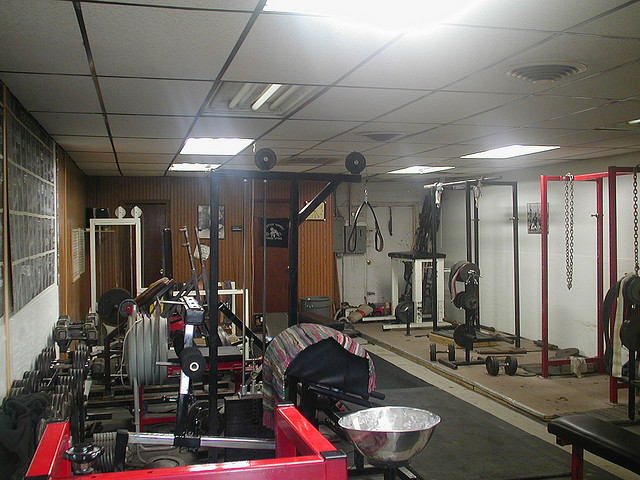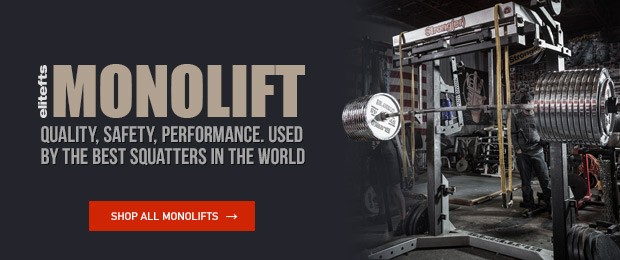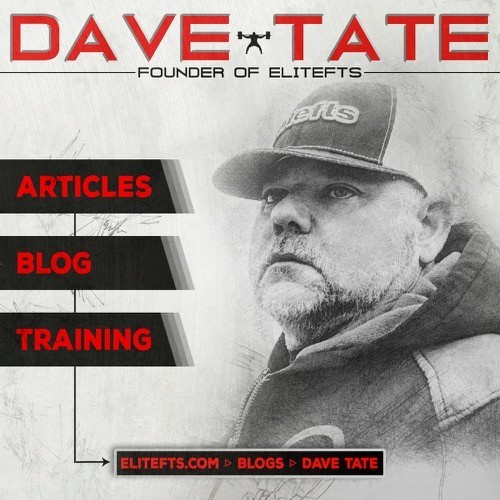
Credit as always to - Louie Simmons and Westside Barbell Club
If you search online, you'll find templates for circa max training. You'll find straight weight percentages, band percentages, chain percentages, reps, sets, and even duration of rest between sets. Everything will be taken care of for you to feel like you can go into the gym, do your work, and be ready for big PRs at the meet.
But it's not that simple. Even if you are ready for a circa max phase—which Dave believes is unlikely—knowing how to design the training is complicated. What should you do for supplemental movements? Should accessory exercises be reduced or increased? What happens to max effort days? Should you remove all other heavy training from your program?
In today's Table Talk, Dave answers a question about max effort training during circa max:
What do you do with your max effort workouts during a circa max phase? How do you keep maxing with the different variations?
Dave begins by sharing the disclaimer that the information he presents about Westside training is exclusively about the 90s and early 2000s. He cannot answer what happens at Westside now because he's not there. What he can do, however, is share the years of experience he had as a lifter at Westside, and how those experiences shaped the understanding of training he has today.
With than in mind, if you're going to use a circa max phase, the key thing to remember is that you're training with weights that are in the 90% and higher range. This means that your training on your max effort days has to be dialed back a bit to accommodate the intensity. During Dave's time at Westside they accomplished this in multiple ways, such as doing circa max every other week instead of every week, or using movements that were easier to recover from, such as good mornings in the three to five rep range (one of Dave's favorite methods at the time).
Dave says that the key here is to not completely abandon the max effort work. You can adjust the weeks that are "up" weeks and weeks that are "down" weeks, which Dave explains in the video. In his case, he eventually reached what he found to be the optimal max effort training wave, which was three weeks up and two weeks down in the progression. The first week would be normal max effort work, with week two and week three being altered movements. They would then normalize in week four and remove max effort work in week five.
As an additional general point of advice for approaching a circa max phase, Dave suggests considering the reason you believe you need a circa max phase. Are you qualified for it? What makes you believe you will perform better after a circa max phase than a normal peak? If you can't answer these questions, you're better off using a standard peaking cycle.
WATCH: Table Talk with Dave Tate — Balancing Your Life
How many times have you heard someone dismiss Westside as as program that only works for raw lifters? How many questions on the Q&A have you seen about adapting Westside for a lifter who isn't in gear? Spend a little time on the internet and you can find endless advice telling raw lifters to avoid Westside, or to change significant aspects if they hope to get stronger using it.
In this video, Dave addresses a common misconception about training at Westside from the time he was there in the 1990s and 2000s: the program was designed for geared lifting. Prior to moving to Columbus and joining Westside, Dave had been speaking with Louie on occasion from 1983 to 1988 and integrating some of his training methods, but still largely using various forms of linear periodization that included regular use of powerlifting gear. His progression of training with the inclusion of gear went something like this:'
- Knee wraps for any weight over 405 pounds, any time of the year.
- Begin wearing briefs at eight weeks out from the meet.
- Several weeks after adding briefs, add the squat suit with straps down.
- Several weeks after adding the squat suit, put the straps up.
This layout changed entirely once Dave went to Westside. It became common to only wear briefs on the dynamic effort squat day and nothing else. In fact, they would often only wear gear twice: once when they got it just to see how it would fit (with no lifting being done), and then on meet day. At first this took a little getting used to for Dave, because he typically used his bench shirt for anything five reps or under and would design his training program to include work in gear. The shift in training philosophy was clear: just fucking get stronger. The idea was that if you got stronger without the gear, you'd be stronger once you put the gear on.
The one downside to this Dave calls out is is the fit of the gear. If you missed a meet or got hurt, it was very possible to go an entire year without having worn your gear. What happens when you come back, train for a meet, bloat up, and try to get into your gear? It doesn't fit and as a result you can't hit depth, can't touch in your shirt, and you're in trouble.
This changed over time, as the carryover lifters could get from gear increased. As lifters stared to get 80, 100, 200, or even 300 pounds out of a bench shirt (yes, 300 pounds), this had to change. Skill work in the gear became necessary throughout the training cycle, which is not something that had mattered during the era of single-ply gear that you simply hoped wouldn't blow out at the met. This shift changed a lot of things in the sport of powerlifting. In the 2000s when lifters started to really hone their gear use, all of the sudden a guy with more skill could beat a guy with superior genetics. Now you didn't have to be the most genetically gifted person to win a top-level meet.
What sounds easier: finding a group of local lifters and building them into the strongest in the world, or finding the strongest lifters in the world and recruiting them to join your gym? Which would take more time? Which would require more expertise? If you started a gym and found a way to convince the strongest lifters in the world to train there and go win national and world meets while representing your gym, how easy would it be to convince everyone you were the best powerlifting coach in the world?
It turns out it would probably be much easier to simply recruit than to build, and it's exactly what a lot of people have accused Louie and Westside of having done. A lot of people have slandered Westside's name by claiming that no one got strong in the gym, and that instead all the lifters were strong before they arrived. It's the same complaint levied at every professional sports team that signs the best players in free agency and then wins a championship: they bought that championship, they didn't build it. The implication is that success, true success, in any sport should be home-grown, built from the ground up, and not brought in from outside.
In this video, the third episode of Westside Misconceptions, Dave puts the Westside recruiting myth to rest. When Dave joined Westside in the 90s, he was the first person to have ever been recruited from outside the city. Every other member of the gym—with over 50 combined elite totals—had been local, living in the Columbus area. These lifters hadn't been recruited and they didn't come to the gym with elite totals, but they all earned them while they were there.
Dave and the very few others who were recruited to Westside at that time (John Stafford, Mike Ruggeria, and others) were subject to specific rules. For instance, Dave wasn't allowed to have his name on the elite board hanging in the gym until he hit elite numbers in a different class than he'd done it in before coming to Westside. Not only was Louie not recruiting people from outside the area, but once he did, as in Dave's case, he wouldn't even recognize their accomplishments until they achieved new feats.
In the 2000s Louie decided he was going to produce the all-time best lifters ever, and this is when he started looking outside to recruit. For almost 30 years prior to this, Westside was a bunch of guys from Columbus outside of a garage or a shitty gym, training together and getting stronger. The reputation of the gym was established long before recruiting ever happened. It was the reputation that brought in the lifters from outside, not the other way around.
WATCH: Westside Misconceptions — Program Design with Gear
In another installment of Westside Misconceptions, Dave takes on a topic few lifters know the truth about: the standards at Westside. When talking about the difficulty of being part of Westside and the high standards every lifter was held to, it's not just about the training. Being at Westside meant you were pushed to your limits in far more ways than the weight you moved.
There were rules of being at Westside. If you trained as part of the 8:30 AM crew and you showed up late, you were thrown out of the gym. If your effort sucked for a few weeks and you were lazy, you were out. The mentality was that the gym was only as strong as its weakest person, and if the weakest person was a tweed, they were out. This led to many very talented, very elite lifters being thrown out.
Part of being at Westside meant understanding what you could contribute to the gym. It was clear what Westside could do for you — it could turn you into one of the strongest lifters in the world. But what could you give back? This was the question asked of every member. You had to make everyone else at the gym stronger.
The main point here is that the standard at Westside was really fucking high. And the standard would never be lowered — even if you couldn't live up to it. In fact, most people there felt they couldn't live up to the standard, Dave included. But that didn't stop them from doing everything they could to try.
When meets came around, you were either lifting in the meet or you were at the meet helping the people who were. If you weren't helping every other lifter at every meet, you were out. When the lower tier lifters were lifting in state meets, the upper tier lifters went to help them in the same way that the lower tier lifters helped the upper tier lifters at world meets. Every member was there to make the others stronger.
To be on the board at Westside, at the time, meant you had to break the all-time world record, because that was pretty much everybody that was on the board.
Dave then discusses several training aspects of his time at Westside:
- Dave is very cautious in the use of a circa max phase. Everything else has to be perfect and every training factor has to be consistent; technique, equipment, training days, training times, training partners, etc., all have to be consistent.
- The max effort method is about learning to strain and knowing what to do when you hit a wall in a lift. For it, you use exercises that have correspondence to the main squat, bench, and deadlift, but are not identical to the competition lifts.
- You don't have to know ever PR going into max effort training, but you can determine what 90% and above is every session. This doesn't always require calculating numbers.
- Dave prefers a new lift each week for max effort weeks, using singles.
- Each part of the system, including details about the max effort, dynamic effort, and repetition effort can be found in Dave's article, "The Eight Keys, A Complete Guide to Maximal Strength Development."
WATCH: Westside Misconceptions — Athlete Recruitment Process













1 Comment